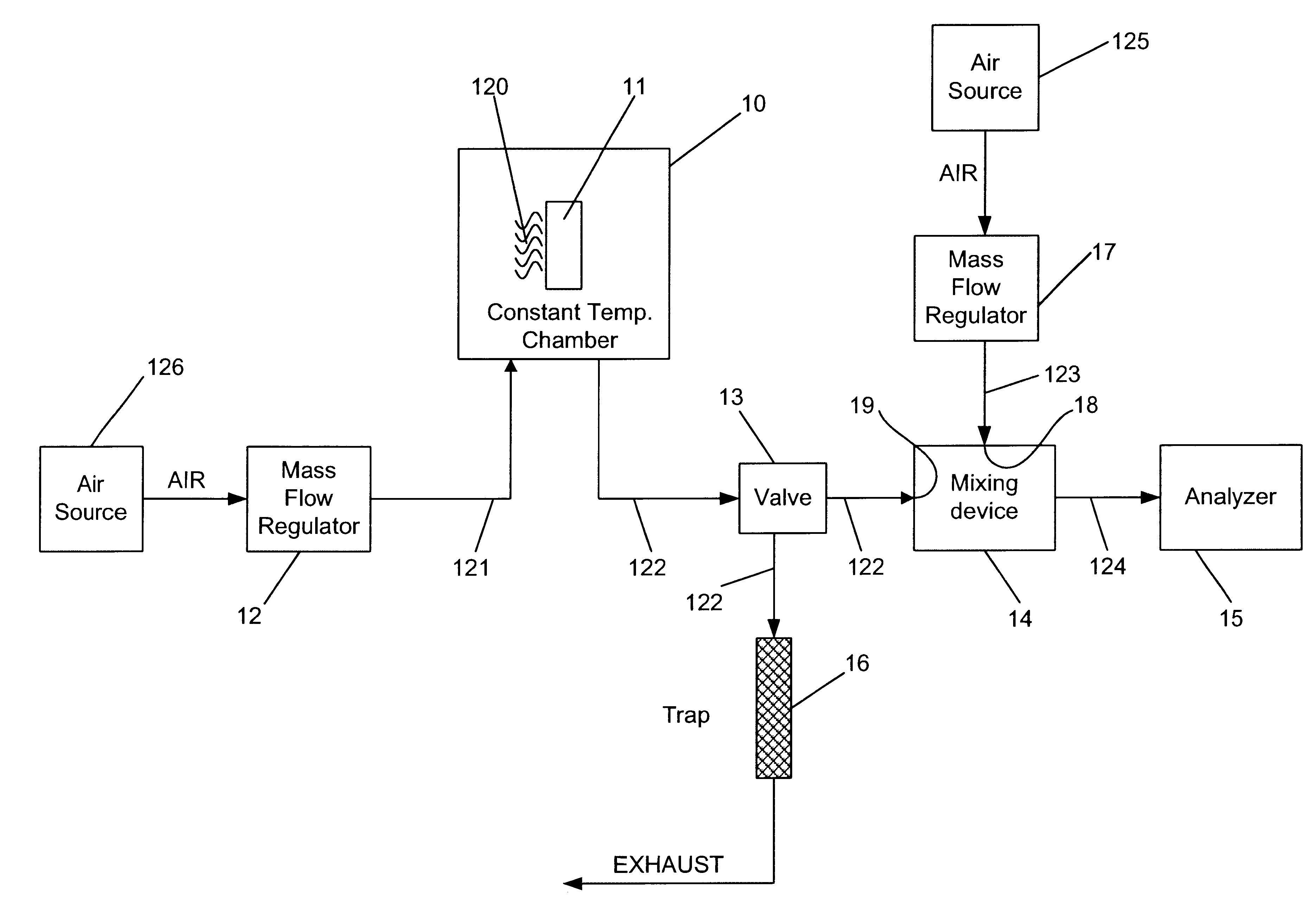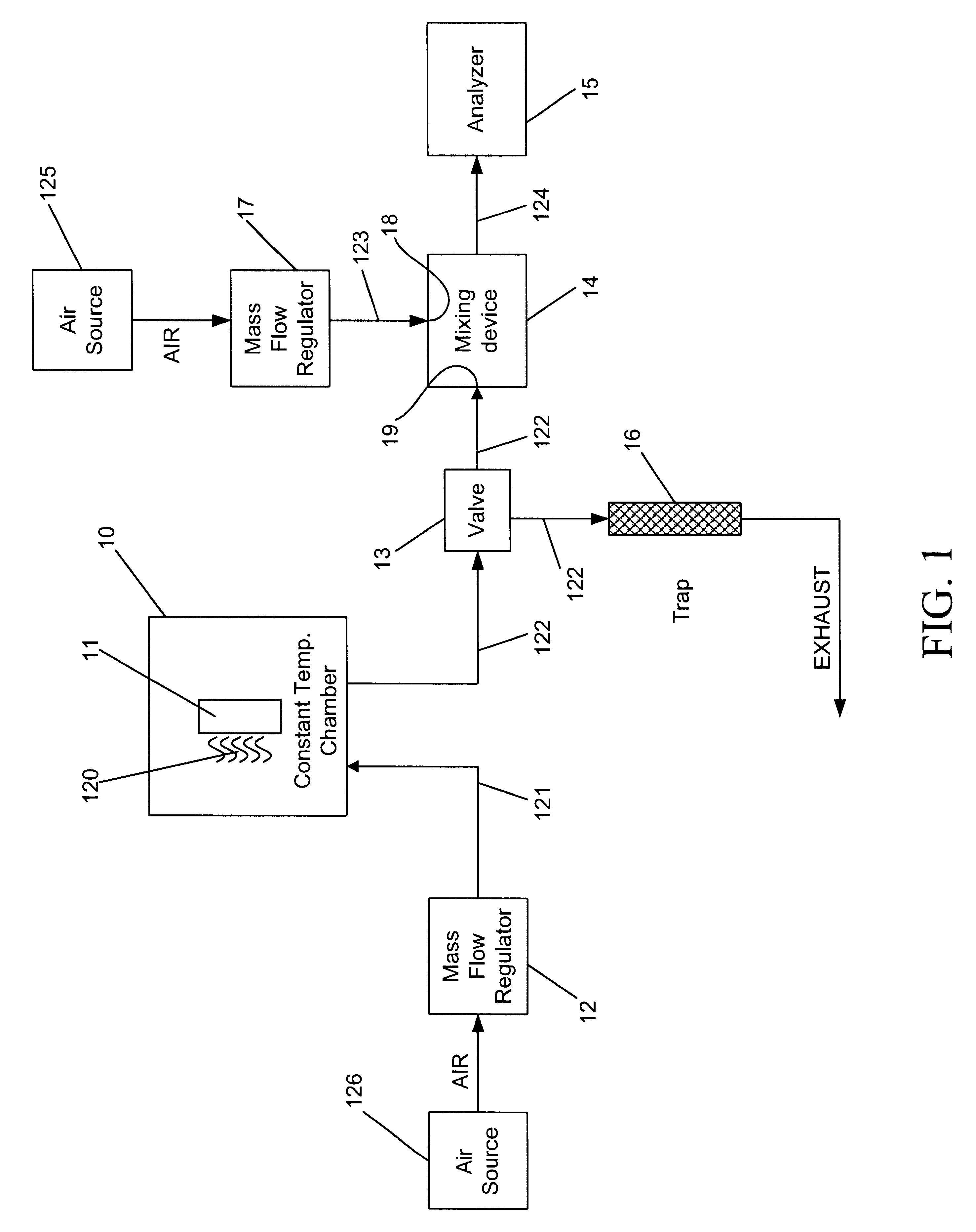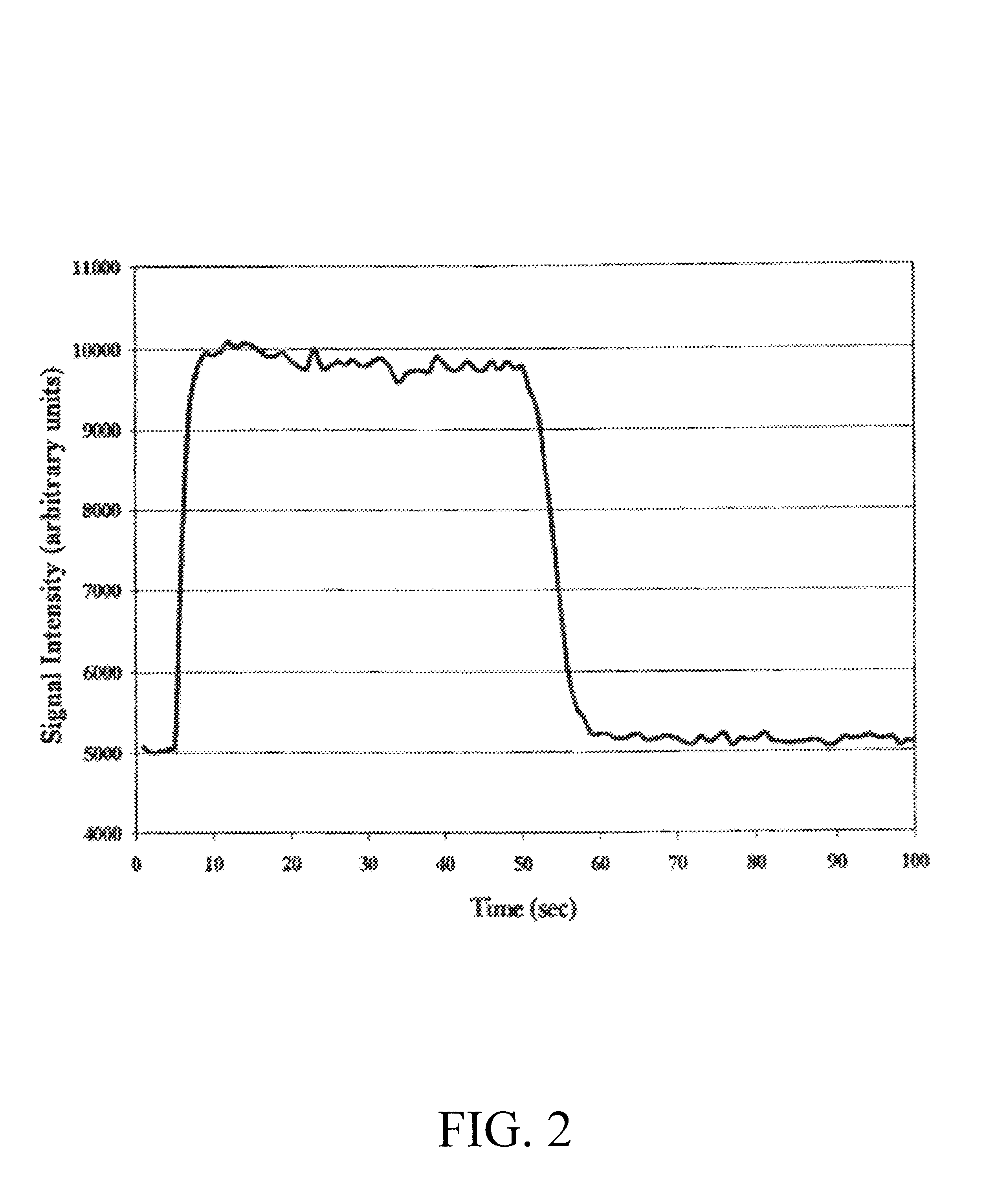Calibration scheme for continuous monitoring of mercury emissions from stationary sources by plasma emission spectrometry
a technology of plasma emission spectrometry and continuous monitoring, which is applied in the direction of spectrometry/spectrophotometry/monochromators, optical radiation measurement, instruments, etc., can solve the problems of inability to provide certification of the mercury concentration of the delivered gas stream, inability to continuously measure mercury, and inability to lend themselves to mixture and containmen
- Summary
- Abstract
- Description
- Claims
- Application Information
AI Technical Summary
Benefits of technology
Problems solved by technology
Method used
Image
Examples
Embodiment Construction
Referring to FIGS. 1 and 5, a mercury permeation tube 50 as the source of mercury vapor 11 and a constant temperature chamber 10 were utilized. The mercury permeation tube 50 had an active length of 5.0 cm and was factory-certified to produce a mercury vapor output of 1.988 micrograms per minute at a temperature of 100.0.degree. C. The mercury permeation tube 50 was placed inside the constant temperature chamber 10 and allowed to equilibrate to the desired temperature. Carrier flow 121 of 300 mL / min of air was allowed to constantly flow through the chamber to entrain the mercury vapor 120.
Referring to FIG. 1, the 3-way solenoid valve 13 was positioned such that the mercury vapor / carrier air stream 122 was diverted to the mixing device 14 where it was combined with a flow of diluent air 123. The flow of diluent air 123 was 15.0 L / min and when combined with the mercury vapor / carrier air stream 122, the total flow 124 was 15.3 L / min. At the certified mercury output rate of 1.988 microg...
PUM
| Property | Measurement | Unit |
|---|---|---|
| temperature | aaaaa | aaaaa |
| temperature | aaaaa | aaaaa |
| temperature | aaaaa | aaaaa |
Abstract
Description
Claims
Application Information
 Login to View More
Login to View More - R&D
- Intellectual Property
- Life Sciences
- Materials
- Tech Scout
- Unparalleled Data Quality
- Higher Quality Content
- 60% Fewer Hallucinations
Browse by: Latest US Patents, China's latest patents, Technical Efficacy Thesaurus, Application Domain, Technology Topic, Popular Technical Reports.
© 2025 PatSnap. All rights reserved.Legal|Privacy policy|Modern Slavery Act Transparency Statement|Sitemap|About US| Contact US: help@patsnap.com



